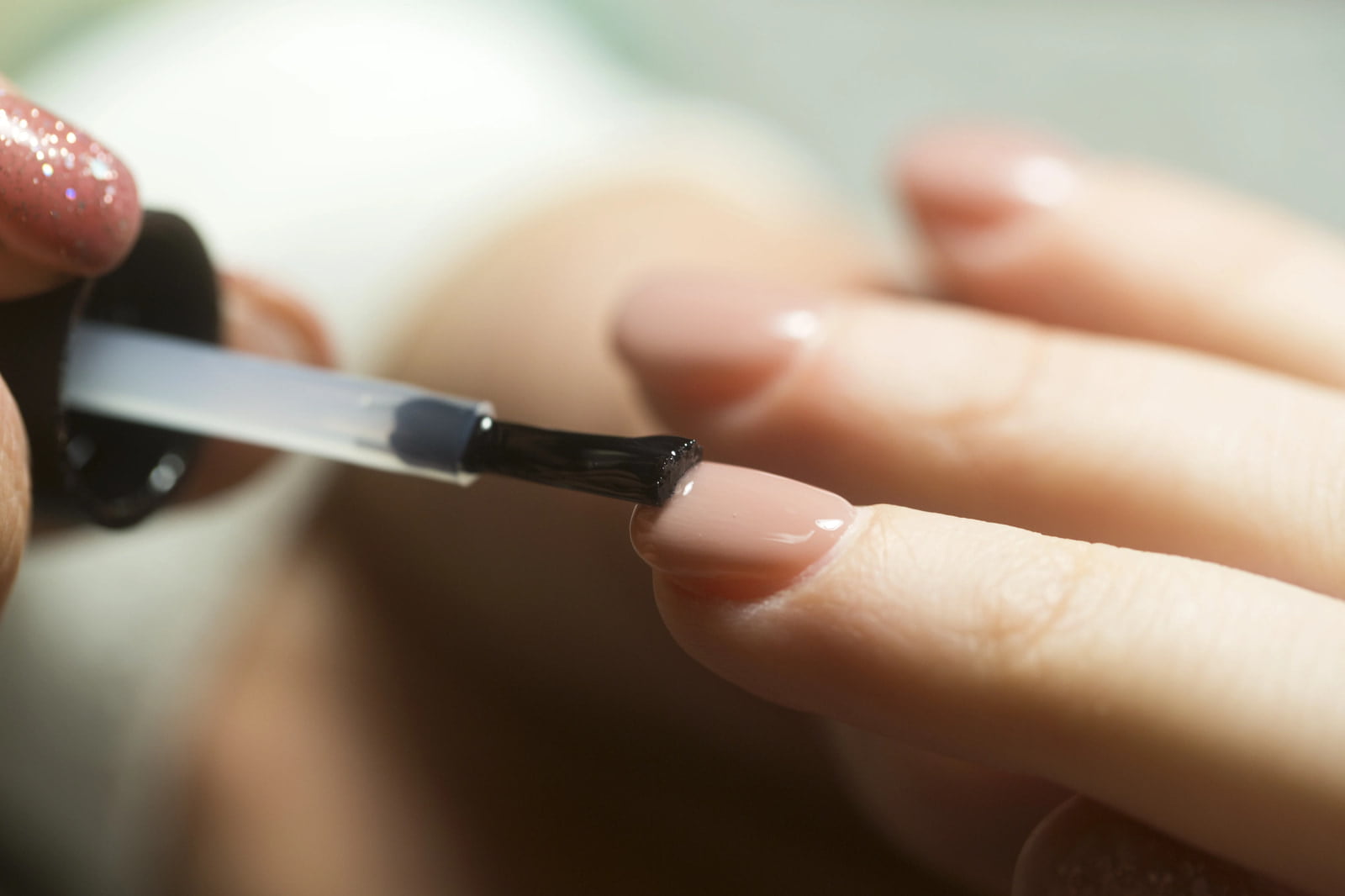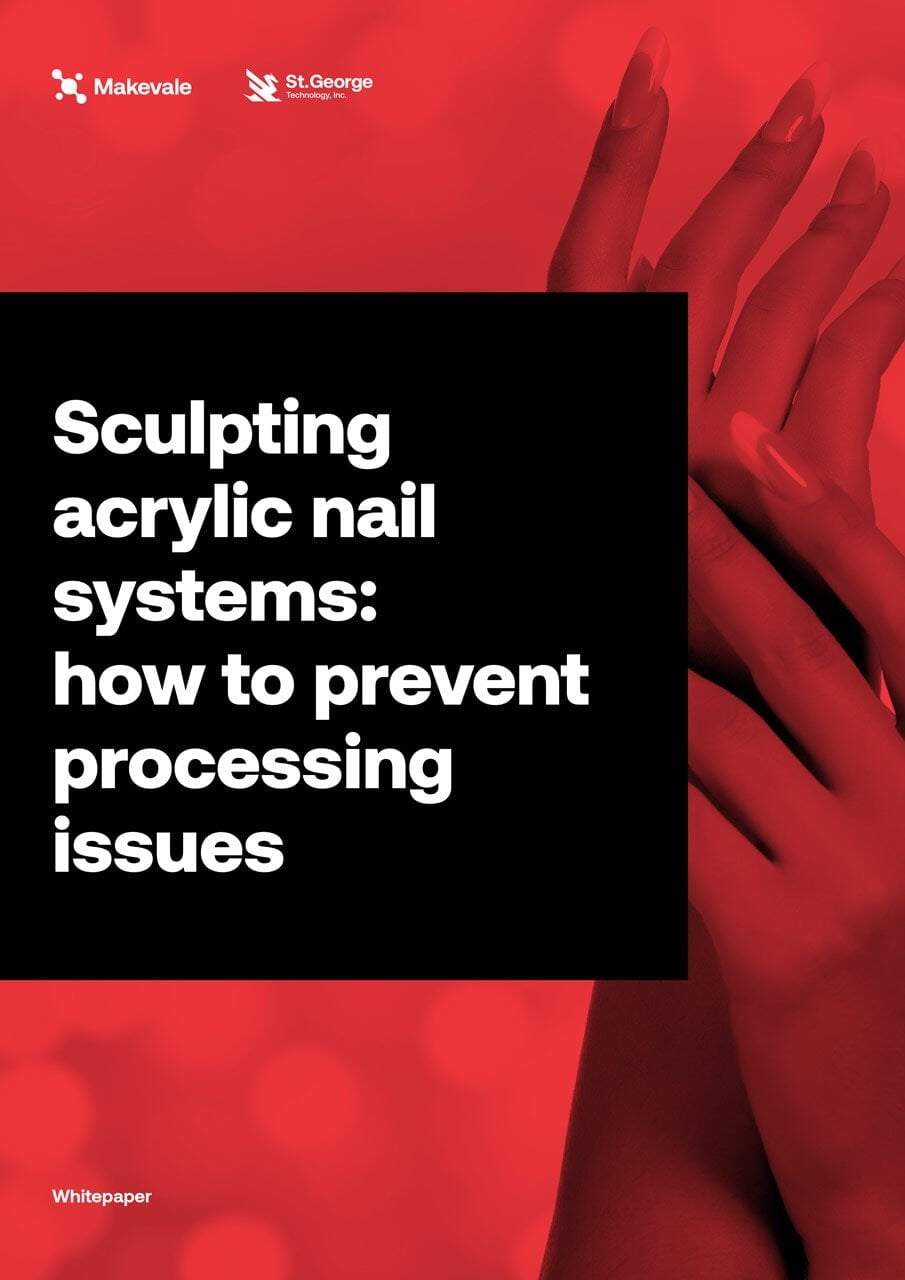
Protecting or decorating a surface with just a single layer of coating can prove to be a significant challenge, regardless of what some paint manufacturers might tell you! Achieving good adhesion, vibrant colour, a glossy finish, and appropriate durability and resilience in a single layer of paint or varnish requires a delicate balance between competing requirements.
As a result, we end up with primers for adhesion, colour coats for the aesthetics, and clear top coats to protect and enhance the colour. In any coatings system, a good top coat will generally be wear-resistant, aesthetically appealing, and resistant to the extremes of environment, including water, sun exposure, and abrasive materials.
The nail industry is no different, except the aesthetics take on even greater importance so achieving a flawless, glossy finish that resists scratching, chipping, and peeling is paramount. Modern UV-curable top coats for nails, built upon groundbreaking research in methacrylate chemistry, have transformed the manicure industry, offering a fast-drying, wear-resistant finish that surpasses traditional lacquers in durability and gloss.
The role of gel-based top coats
The core principle of UV curing involves using light to solidify a liquid mixture, eliminating the need for a hardener, heat, or the evaporation of a solvent. We need, at a minimum, something to absorb the light and trigger the chemical reaction, and something to transform from a liquid to a solid.
The ingredient that absorbs the light and triggers the reaction is known as a photoinitiator. In the case of a top coat for nails, these molecules produce “free radicals” when exposed to light of an appropriate wavelength. The ingredients which become a solid polymeric coating react with the free radicals produced by the photoinitiator and start a chain reaction which links them together as a single piece of polymer - like a domino toppling, once the first domino has gone, the rest follow suit.
These reactive ingredients comprise a carefully formulated mix of chemicals known as monomers, oligomers and cross-linkers. Some of these have more than one reactive site on their molecule, akin to two dominoes tied together. This contributes to improved properties of the finished top coat.
A complete cure?
Much like dominoes toppling, sometimes the chain reaction can falter and must be restarted. Thankfully, the photoinitiator molecules don’t all react instantly, and continued light exposure leads to continued curing. Ideally, a UV-curable top coat should be given the correct light dosage to ensure 90% of the reactive ingredients have reacted. The better the sensitivity of the initiator to the light delivered, and the more intense the light, the quicker we reach the 90% level of reaction.
Different types of these photoinitiator molecules are sensitive to different wavelengths (between 250 and 450nm). The choice of photoinitiator, choice of lamp, and thickness of the top coat (or even base coat) will affect the curing — as can the distance from the lamp to the nail. It is paramount that the lamp selected complements the product, for a successful cure.
It is crucial to thoroughly cure all the coatings on the nail. This prevents not only breakage but also, more importantly, the sensitisation of skin due to unreacted materials migrating through the nail. Note that the hardness of the surface does not always indicate that a layer is cured all the way through.
The heat spike
Occasionally, during treatment, salon clients may experience a warming sensation on their nail beds. As the chemical reaction proceeds, new bonds are formed and heat is released. This is normal in a polymerisation reaction and is called the exotherm.
A sudden ‘heat spike’ experienced by clients can be an indication that the reaction is occurring too rapidly. This can be damaging to the nail bed and uncomfortable for the customer - but it can be avoided. Nail technicians should take care to ensure the products and lamps complement each other and apply the gel in thin layers to prevent too much heat from being released at once.
So how do we make sure that a UV curable top coat meets all of its technical criteria and looks the part as well? The answer is in the formulation.
Practicality vs functionality
Part of the challenge for a formulation chemist is creating a UV curable top coat that satisfies both pre-cure and post-cure criteria, in one bottle. A top coat should be easy to handle, as well as cure efficiently and have the appropriate gloss and durability expected of a finishing layer.
Consumers often overlook the intricate details of what goes into a UV nail product and the reasons behind those choices. Consider the viscosity (the flow) of a top coat - if it behaved like water, a nail technician would struggle to get it onto a brush. They would have little-to-no control of it, and application would be very tricky. Formulation chemists will strive to control the viscosity of their product to allow ease of application. In some cases, where more elaborate artwork like encapsulations is required, the chemist might alter the formula to increase the viscosity and allow for such designs. An unstable formulation can lead to changes in viscosity—these factors are all considered when choosing the components.
Gloss is another critical feature, beyond achieving a vibrant shine, it must also be long-lasting. Generally, products designed to cure quickly will be more glossy and durable. However, as noted earlier, a faster curing speed can increase the likelihood of a heat spike. These are some of the trade-offs that chemists will grapple with to optimise their products and ensure they are as practical as they are functional.
Striking the perfect balance between a durable, aesthetic finish and a safe, practical application is paramount when crafting a UV curable top coat. Every component in the reaction, from the photoinitiator to the light used for curing, plays a critical role in the performance of the final product. It is this intricate chemistry that empowers chemists to elevate nail systems to new heights of excellence.
